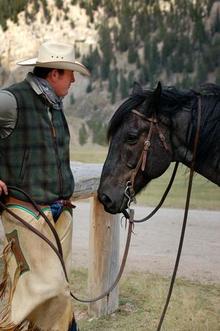A recent study found that a third of recreational riders are too heavy for their mounts, leaving the animals at risk of several welfare conditions. The study found that only 5 percent of riders were the optimum weight for their horses.

Over weight riders leading to horse health problems
People tend to think that horses are such big animals they must be OK, and don't take notice of the weight issue of riders, but the health impact on the horse can be quite extreme.
Experts have warned that a growing number of the animals are suffering health problems because they are being ridden by people who are too fat for them.
Dr Hayley Randle, an equitation scientist involved in the research, said the findings should ring alarm bells among horse owners.
“People tend to think that horses are such big animals they must be OK, and not to take notice of the weight issue of riders,” she said. “But the health impact on the horse can be quite extreme, quite quickly. It seems to be a growing problem.”
It comes after the first saddle designed for plus-size riders went on sale earlier this year.
The study, published in the Journal of Veterinary Behaviour, involved an analysis of 152 horses and their adult riders from stables in Devon and Cornwall, England.
The researchers, from the Duchy College in Cornwall, found that just eight of the riders (5 per cent) weighed less than 10 per cent of the weight of their horse. This is the “optimum” ratio on a set of guidelines worked out by vets.
Ninety-five of the riders (63 per cent) weighed between 10 and 15 per cent of the weight of their horse, which is considered “satisfactory”. Forty-nine of the riders (32 per cent) weighed more than 15 per cent of the weight of their animal, a ratio at which the guidelines state there is a welfare risk to the animal. The riders and horses were weighed without their saddles.
Ms Randle, who conducted the study with her fellow researcher, Emma Halliday, said the findings showed the need for the introduction of industry-wide guidelines to protect horses from overweight riders.
“The problem is that these ratios are not widely known by people in the horse industry,” she said. “People do seem generally to be a bit heavy for horses. That is just a consequence, I suppose, of our average weights going up.
“It is definitely a potential welfare issue. These are broad-brush guidelines. They don’t take account of all factors, such as the age of the horse, the breed, the style or riding or the experience of the rider. But they are still important and helpful and people are not taking enough notice of them.”
As well as back pain, the burden of an obese rider can lead to lameness in horses, as they compensate by shifting the weight, causing the overuse of certain muscles. It can also lead to behavioural problems, such as bucking, rearing and refusing to follow commands.
Keith Chandler, the president of the British Equine Veterinary Association, said: “A good proportion of our members’ time is taken up with dealing with lameness and back problems. And a proportion of them will be caused by the wrong riders on the wrong horses.
“Many riding schools are very aware of these problems and [of] exactly who can ride which horses and who cannot, but there are some horse people who may not fully understand the issues.
“There is a discussion which needs to take place in the horse riding community. There needs to be an awareness that some larger riders need to ride bigger horses.”
